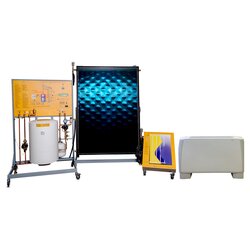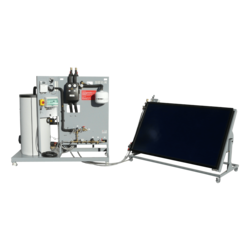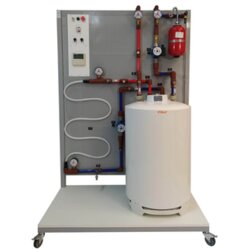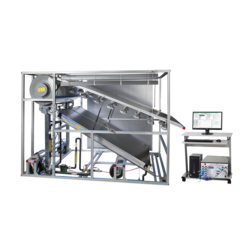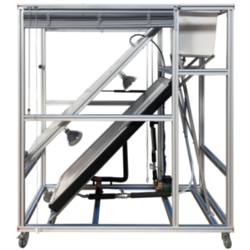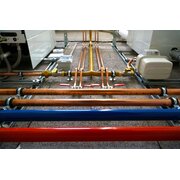Solar Thermal Training Systems & Lab Equipment
Sort by
Learn about Solar Thermal Training Systems
In this section we will cover solar thermal training systems, the technology and how these systems differs from the more common solar photovoltaics training systems.
We will also look at reasons for teaching solar thermal technology and the best practices, including how to search and find the best solar thermal training systems.
What is a solar thermal training system?
A solar thermal training system is an “educational tool” or “instructional technology” which is used to teach students in a hands-on manner about the certain technology used to harvest solar energy.
These training systems normally replicate industrial systems in a smaller format, including hardware, sensors, software tools and educational content such as curriculum, teacher materials, student exercises etc.
Solar thermal training systems are mostly used in high schools, community colleges, TVET colleges, polytechnics, universities, and in corporate and vocational training centers.
Solar Thermal vs. Solar Photovoltaic (PV)
There are differences between Solar Thermal and Solar Photovoltaic technology, below a table to summarize the main points in residential applications. See this other product category for solar pv training equipment.
|
|
Solar Thermal |
Solar Photovoltaic (PV) |
|
Technology |
Absorbs sunlight to heat a fluid (water, oil, air or other) |
Absorbs sunlight and creates electricity by silicon-based technology |
|
Residential application |
Warm water usage, or spatial heating through radiators |
Residential electricity for any household purposes |
|
Benefits |
Space efficient, energy efficient, simple technology |
Long lifespan, can cover significant amount of household electricity needs |
|
Downsides |
Less effective in winter times, can freeze if temperature drops |
Intermittent (needs battery storage), initial investment, needs large space |
Why teach Solar Thermal Technology?
Solar thermal technology in some applications (residential) can have various benefits when compared to solar photovoltaic technology. Therefore, it becomes more and more important for HVAC technicians, electricians, plumbers, construction workers, and renewable energy installers, to learn about solar thermal technology.
Best practice of teaching Solar Thermal Technology.
When teaching a technical subject there are many reasons why one should consider using hands-on equipment or instructional technology to make the learning experience better for the students.
There are various widely recognized benefits of hands-on training, namely:
- Content retainment: course materials are proven to stick much longer when what is learn has also been applied to practical problem solving.
- Increased engagement: students who learn in a practical environment pay better attention, are more engaged and willing to learn.
- Critical thinking: since students need to solve problems and trouble shoot physical systems, they will have to understand the intricate workings, as well as make decisions about what to do next.
- Real world experience: getting mentored and taught by a professional who has experience of working within a specific industry gives the students real world experience and prepares them for the work environment.
- Workplace safety: most workplace accidents stem from improper use of machines and equipment, which is why it’s very important to teach students to safely handle technology before entering the workforce.
